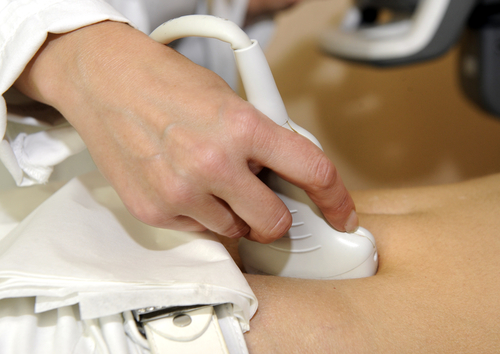 The U.S. Preventive Services Task Force’s recommendation of conducting computerized tomography (CT) screening in people at high risk of developing cancer, even though the practice leads to a relevant number of false positives, doesn’t appear to increase anxiety levels or the quality of life of those who get a wrong cancer diagnosis as some policymakers initially feared, according to a National Lung Screening Trial study.
The U.S. Preventive Services Task Force’s recommendation of conducting computerized tomography (CT) screening in people at high risk of developing cancer, even though the practice leads to a relevant number of false positives, doesn’t appear to increase anxiety levels or the quality of life of those who get a wrong cancer diagnosis as some policymakers initially feared, according to a National Lung Screening Trial study.
“Most people anticipated that participants who were told that they had a positive screen result would experience increased anxiety and reduced quality of life. However, we did not find this to be the case,” said Ilana Gareen, assistant professor (research) of epidemiology at the Brown University School of Public Health and lead author of the study published in the journal Cancer.
In a previous study conducted in 2010 by the same institution, researchers suggested that screening CT scans reduced lung cancer deaths by 20 percent compared to screening with chest X-rays.
After the first results, Gareen and co-authors, including Brown faculty and staff members, conducted new trials to determine the existence of psychological effects on both the CT and X-ray screenings.
According to a recent press release, the team observed that results are similar in both types of exams, even though the contrary might be expected, and that there’s “no increased anxiety or decreased quality of life at one or six months after screening for participants having a false positive,” Gareen said, adding that this was probably due to patients’ awareness of the high probability of getting a false positive. “In advance of any screening, participants were advised that 20 to 50 percent of those screened would receive false positive results, and that the participants might require additional work-up to confirm that they were cancer free.”
Gareen’s team observed 2,812 participants for the study. 2,317 returned the survey after one month screening and 1,990 returned after six months.
The researchers divided participants into groups based on their ultimate accurate diagnoses: 1,024 participants were “false positive,” 63 were “true positive,”1,381 were “true negative” and 344 had a “significant incidental finding,” meaning they didn’t have cancer but instead had another possible problem of medical importance.
The participants answered two questionnaires by telephone, one on physical and mental health quality and another one on anxiety levels conducted by the staff of Outcomes and Economics Assessment Unit.
The answers remained similar whether participants received X-rays or the helical CT scans, with false positive or with true negative diagnoses.
However, the scores of the true positive substantially worsened over time as they battled with the disease.
According to Gareen, with these results, physicians should feel encouraged to recommend appropriate screenings, even though they can have a significant rate of false positive, as long as they’re properly explained.


